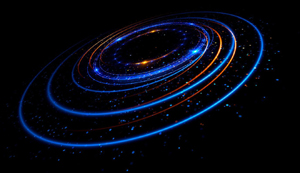Scientists combine light and matter to make particles with new behaviors
5. 7. 2019 | University of Chicago | www.uchicago.edu
Every type of atom in the universe has a unique fingerprint: It only absorbs or emits light at the particular energies that match the allowed orbits of its electrons. That fingerprint enables scientists to identify an atom wherever it is found. A hydrogen atom in outer space absorbs light at the same energies as one on Earth.
While physicists have learned how electric and magnetic fields can manipulate this fingerprint, the number of features that make it up usually remains constant. In work published July 3 in the journal Nature, University of Chicago researchers challenged this paradigm by shaking electrons with lasers to create “doppelganger” features at new energies—a breakthrough that lets scientists create hybrid particles which are part-atom and part-light, with a wide variety of new behaviors.

The research is part of a greater effort in Assoc. Prof. Jonathan Simon’s lab to break down the walls between matter and light, in order to investigate their fundamental properties. In addition to learning about how materials behave at the quantum level, this work could one day help create more powerful computers or virtually “unhackable” quantum communications.
Read more at University of Chicago
Image Credit: Shutterstock
-jk-




